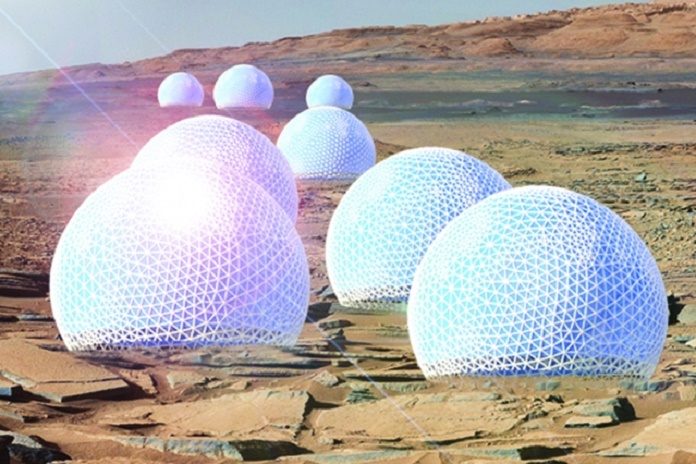MIT scientists have developed a design concept to address the question of how people are going to live on Mars. They have presented their design in an international competition Mars City Design 2017, which focuses on a sustainable Mars city to be built.
Scientists named their design Redwood Forest which creates domes or tree habitats that can each house up to 50 people. The domes offer open public spaces containing plants and abundant water, which would be harvested from the northern plains of Mars. The tree habitats sit atop a network of underground tunnels, or roots, providing access to private spaces and easy, shirt-sleeve transportation to the other tree habitants in the community of 10,000. In addition to connectivity, the roots offer residents protection from cosmic radiation, micrometeorite impacts, and extreme thermal variations.
MIT postdoc Valentina Sumini explained design fundamentals. She forest, using local Martian resources such as ice and water, regolith (or soil), and sun to support life. Designing a forest also symbolizes the potential for outward growth as nature spreads across the Martian landscape. Each tree habitat incorporates a branching structural system and an inflated membrane enclosure, anchored by tunneling roots.”

Image courtesy of Valentina Sumini.
“The design of a habitat can be generated using a computational form-finding and structural optimization workflow developed by the team. The design workflow is parametric, which means that each habitat is unique and contributes to a diverse forest of urban spaces.”
Scientists reported that many of the project features are useful for Earth. It could create living and working spaces in harsh environments, such as high latitudes, deserts, and the seafloor.
Aeronautics and Astronautics doctoral student George Lordos said, “Every tree habitat in Redwood Forest will collect energy from the sun and use it to process and transport the water throughout the tree, and every tree is designed as a water-rich environment.”
“Water fills the soft cells inside the dome providing protection from radiation, helps manage heat loads, and supplies hydroponic farms for growing fish and greens. Solar panels produce energy to split the stored water for the production of rocket fuel, oxygen, and for charging hydrogen fuel cells, which are necessary to power long-range vehicles as well as provide backup energy storage in case of dust storms.”
